There is an updated post on this subject: Dynamic ESS on Beta VRM - part 2
Please comment below that post in case you have questions and/or need assistance.
I am happy to announce that Dynamic ESS is now live on beta VRM, which is highly interesting for everyone that has a ESS system in combination with a dynamic energy contract (with day ahead prices).
Dynamic ESS is an algorithm that aims to minimise the costs made on the grid and battery:
- By scheduling charge/discharge cycles of the battery,
- While taking grid limitations, battery specifications and day ahead energy prices into account,
- When it can, it also considers the consumption and solar yield forecasts when scheduling.
This has been running for a while now on Node-RED where we got the first child diseases out. It is now time to increase the audience, so hence the roll-out on beta VRM.
You can get started with it on beta-VRM via Settings → Dynamic ESS.
There is a (work-in-progress) manual and this article will be updated too the coming days. All feedback can be provided below.
Note that Dynamic ESS applies mostly to countries in Europe that work with so-called “day ahead pricing”. For fixed priced contracts, the VRM version can also be used outside these countries.
For those of you who aren’t familiar with beta VRM, you can log in through this link with your normal credentials.
A webinar about this subject has been held on the 26th of September. The recording of the webinar can be found on our YouTube tech channel: https://youtu.be/YU9jXyfM-eI
Note that there is no need to tag me in posts. I do read and see all messages if you don't tag me as well.



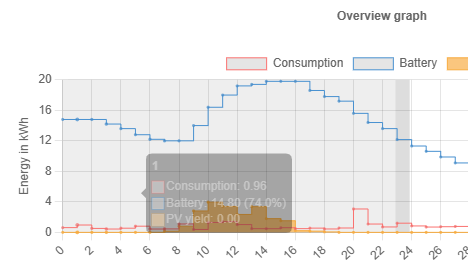
 can you prevent it from feeding ~200W into the grid now? The PV production is also at 0W
can you prevent it from feeding ~200W into the grid now? The PV production is also at 0W



 Setup my system with a 4.4kw export limit however the system is exporting over 7kw
Setup my system with a 4.4kw export limit however the system is exporting over 7kw

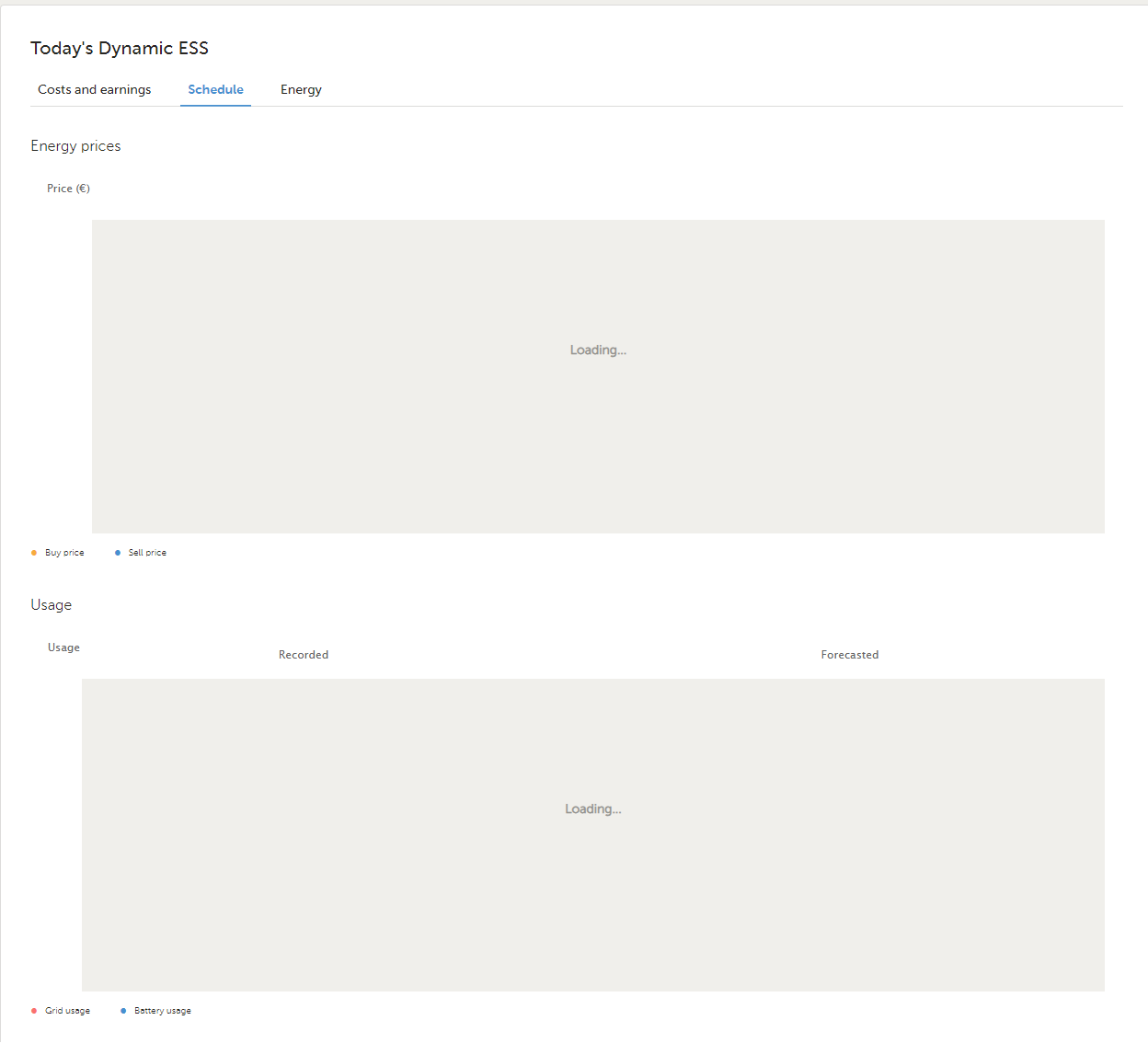





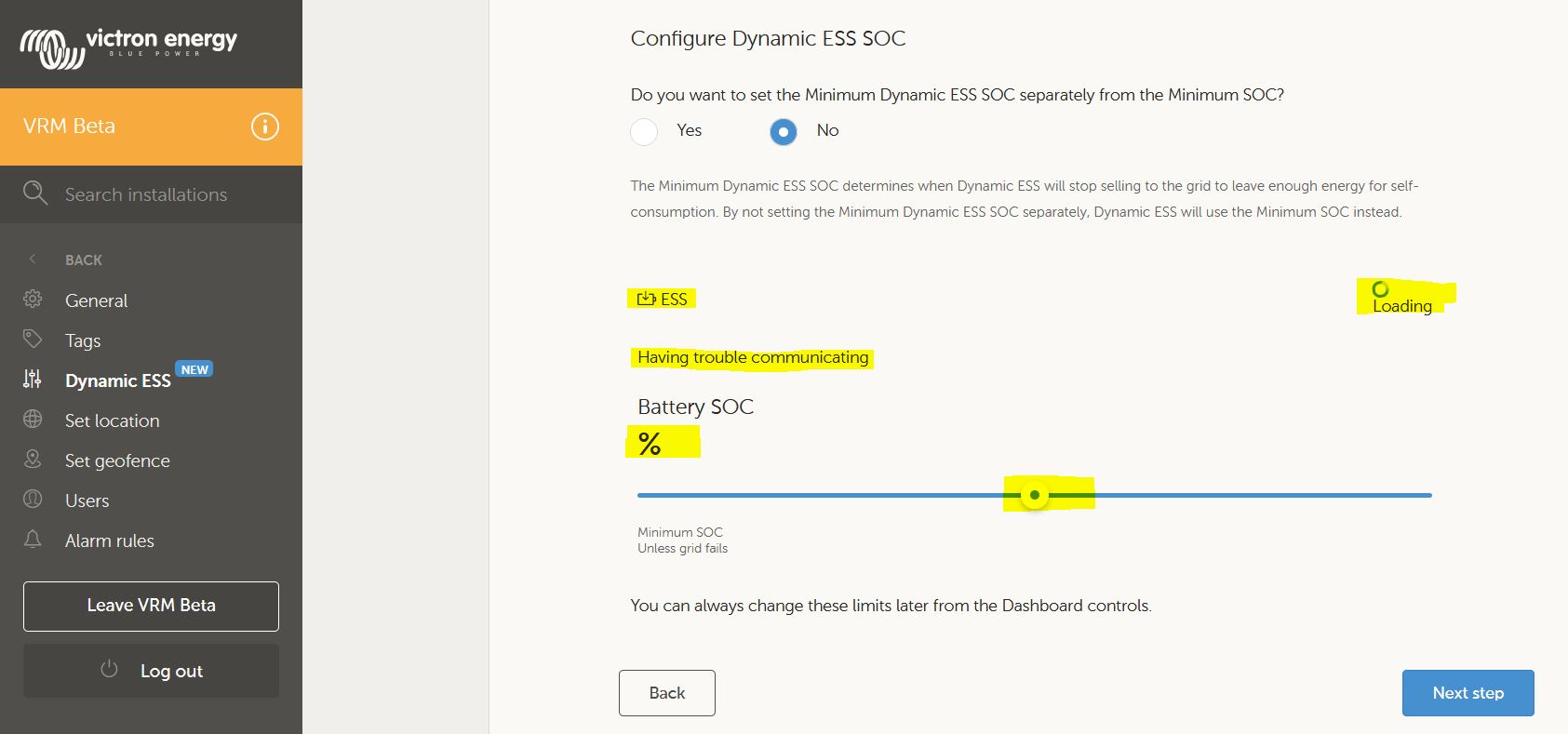

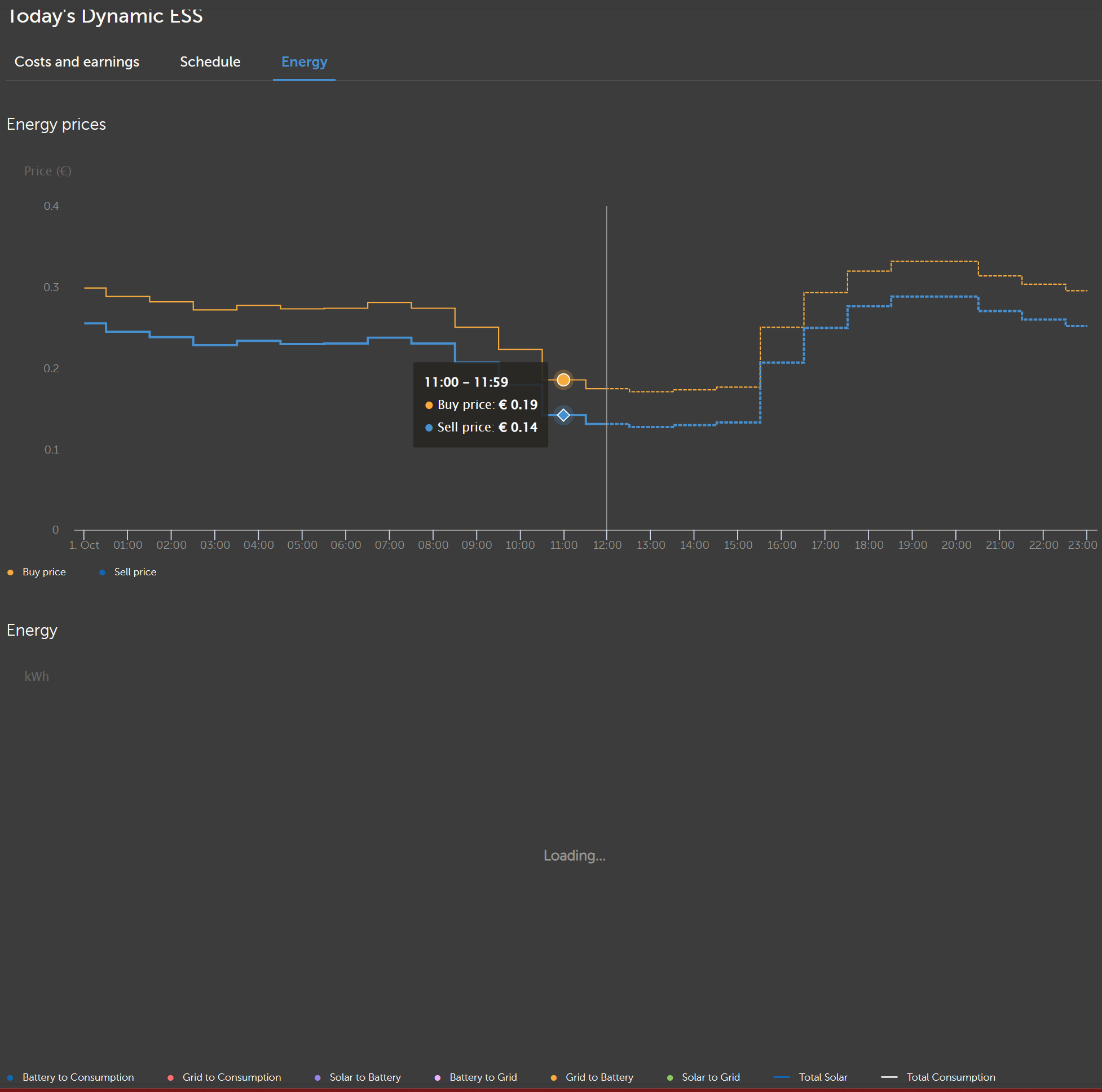




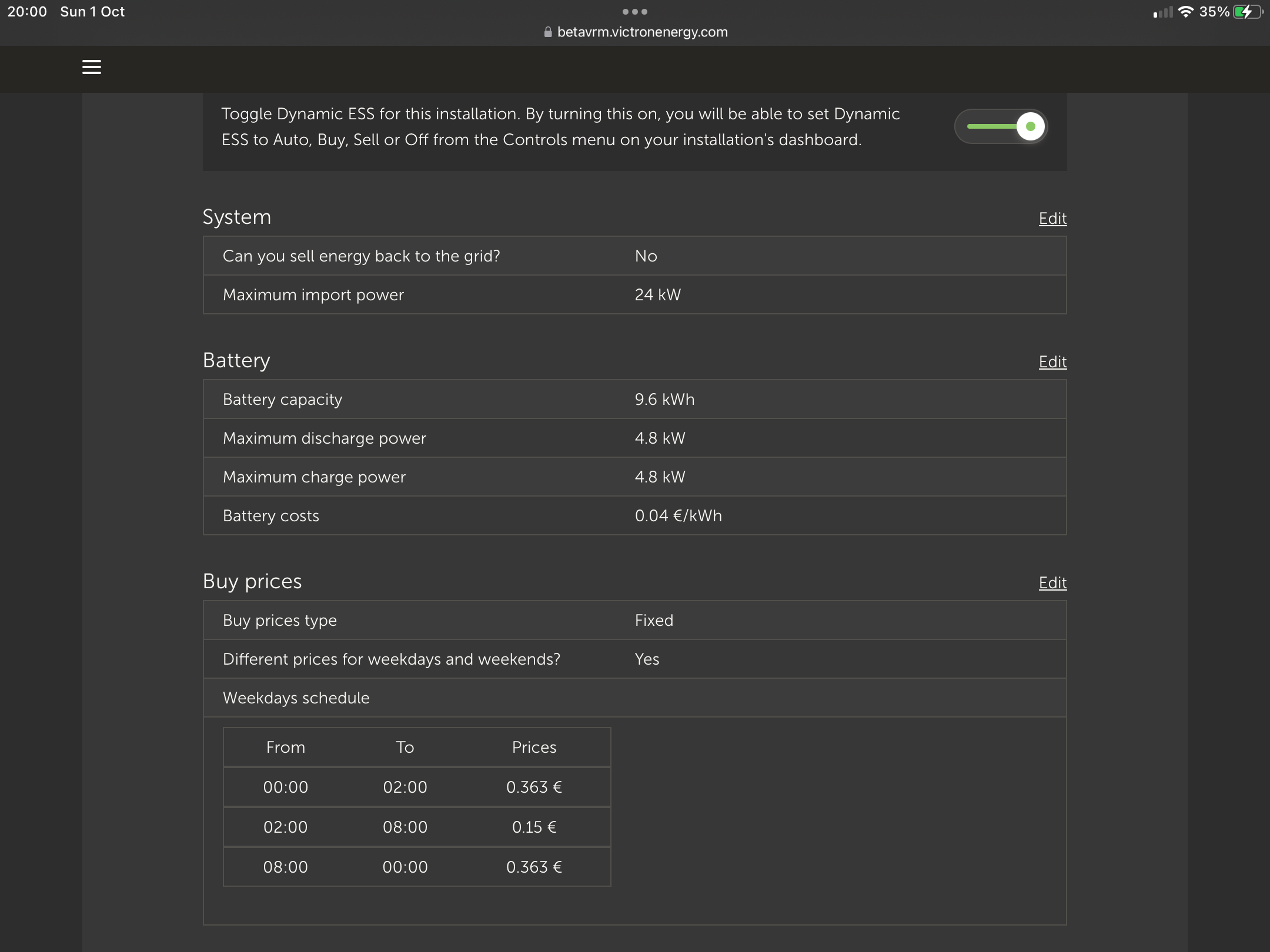 Until now I have been using scheduled charging in conjunction with the weather forecast, but automation using dynamic ESS will be a huge improvement. I’ve only tested it for a day or two so far but am experiencing strange behaviour, causing power to be drawn from the grid when there is plenty of power available in my batteries.
Until now I have been using scheduled charging in conjunction with the weather forecast, but automation using dynamic ESS will be a huge improvement. I’ve only tested it for a day or two so far but am experiencing strange behaviour, causing power to be drawn from the grid when there is plenty of power available in my batteries.



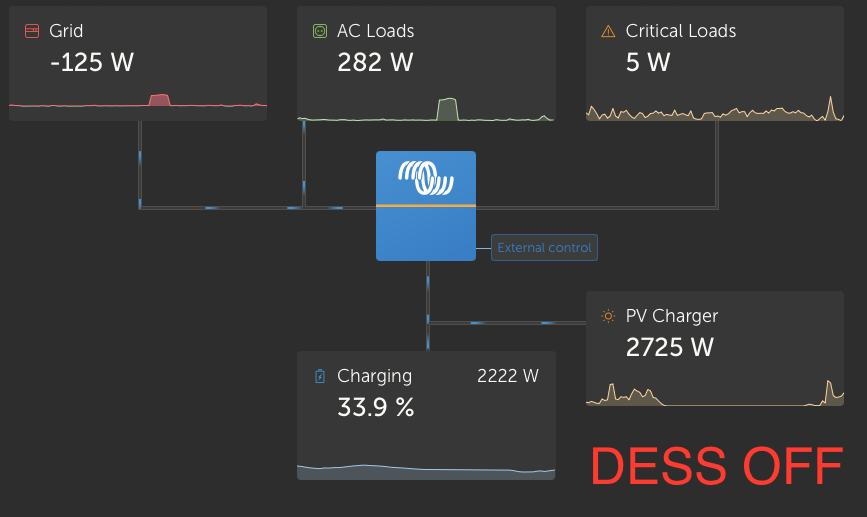


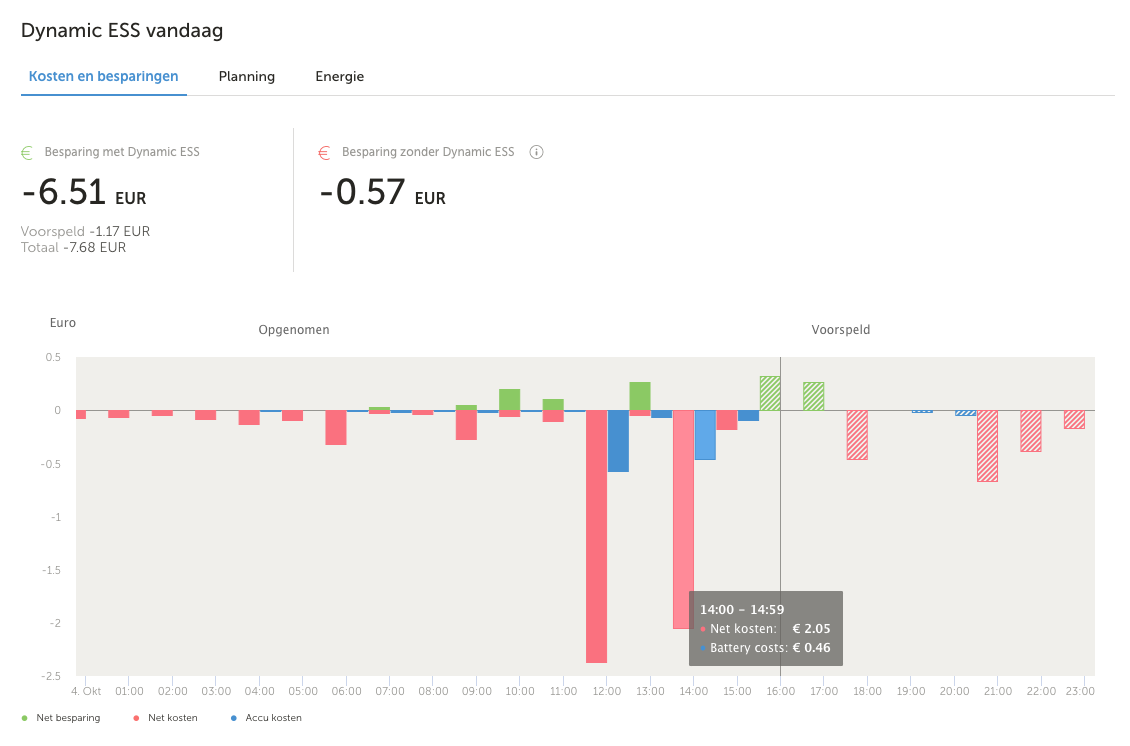






 I always have the problem that when the battery is charging and the grid setpoint is zero the software will also take an amount of electricity from the grid. The Exact amount depends on the solar production.
I always have the problem that when the battery is charging and the grid setpoint is zero the software will also take an amount of electricity from the grid. The Exact amount depends on the solar production.